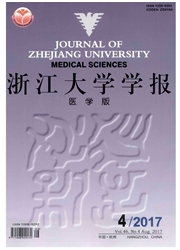

 中文摘要:
中文摘要:
目的:明确甲基硝基亚硝基胍(MNNG)诱导的全核γH2AX所代表的DNA损伤的性质。方法:利用免疫荧光方法观察人羊膜FL细胞中MNNG诱导的γH2AX焦点的形成,中性彗星实验检测DNA双链断裂的形成,碱性彗星实验检测DNA单链、双链及其他类型损伤。结果:MNNG在10mg/L时能诱导一种特殊的全核染色,1mg/L时能在一部分细胞中诱导这种全核染色,但作用比较微弱。在这类细胞中中性彗星实验不能检测到明显的DNA双链断裂的形成,而碱性彗星实验能显示有DNA损伤的存在。结论:尽管γH2AX焦点被认为是DNA双链断裂的特异性标志,这种全核染色可能代表着另外类型的DNA损伤。
 英文摘要:
英文摘要:
Objective: To characterize the DNA damage property represented by the distinct whole nucleus stain pattern of γH2AX induced by N-methyl-N'-nitro-N-nitrosoguanidine (MNNG). Methods. MNNG-induced γH2AX foci formation in human amnion FL cells was observed by immunofluorescent microscopy. DNA double-stranded breaks (DSBs) were detected by neutral comet assay. General DNA damages were detected by alkaline comet assay. Results: A distinct whole nucleus stain pattern of γH2AX was induced by high concentration MNNG (10 mg/L). 1 mg/L MNNG also induced this type of stain pattern in a small fraction of cells, although the effect was transient. Neutral comet assay did not detect any significant DSBs formation in this type of cells, while alkaline comet assay revealed the presence of DNA damage. Conclusion: Although normal γH2AX foci were regarded as a biomarker for DSBs, the whole nucleus stain pattern might represent DNA damage other than DSBs.
 同期刊论文项目
同期刊论文项目
 同项目期刊论文
同项目期刊论文
 期刊信息
期刊信息
